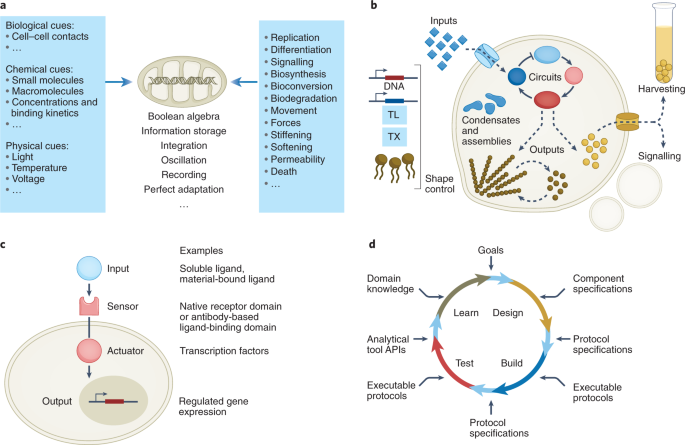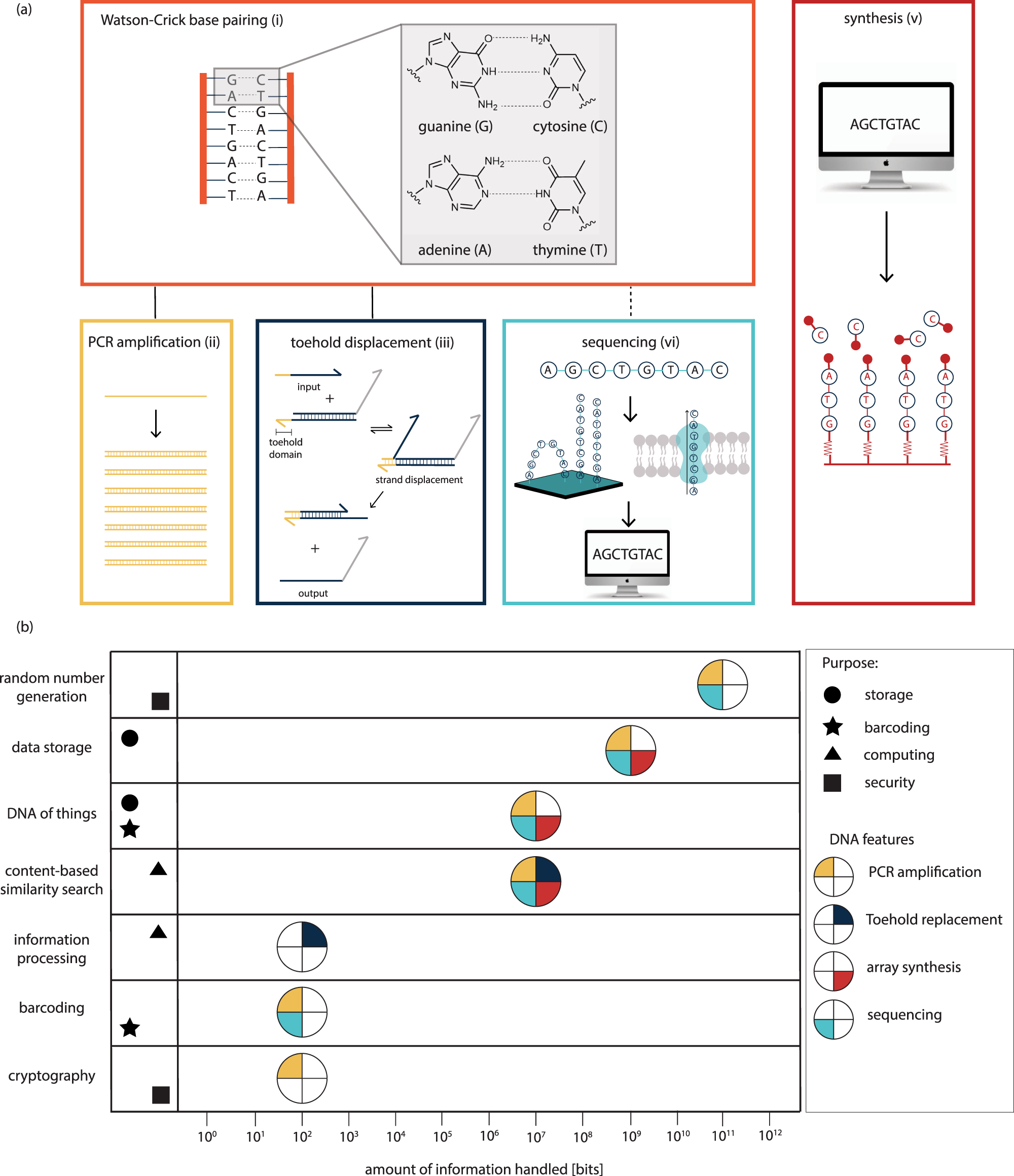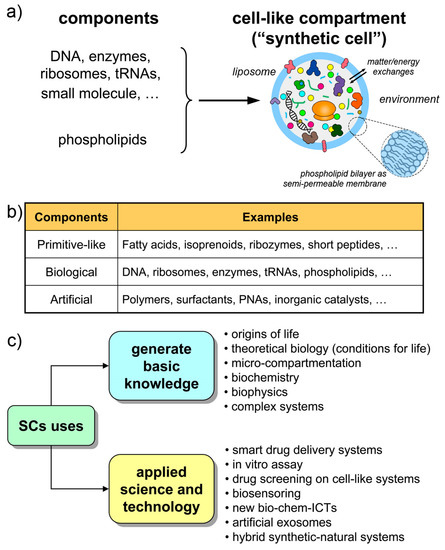Describe Three Ways Scientists Use Synthetic Nucleic Acids
Scientists find that lipids modulate RNA activity a possible clue to. So theyre actually made of polymers of strings of repeating units and the two most famous of the nucleic acids that youve heard about are DNA and RNA.

The Living Interface Between Synthetic Biology And Biomaterial Design Nature Materials
Scientists at the Scripps Research Institute in California had previously described being able to modify bacterial cells to use the extra synthetic letters or bases in their DNAThis gave them an X and a Y along with the A C G and T that all other.

. Nucleic Acids 221 Types of Nucleic Acids 222 Nucleotides. DNA and RNA are responsible for the inheritance and transmission of. Nucleic acids are long-chain polymeric molecules the monomer the repeating unit is known as the nucleotides and hence sometimes nucleic acids are referred to as polynucleotides.
Nucleic acids are biopolymers macromolecules essential to all known forms of life. They are composed of nucleotides which are the monomers made of three components. Nucleic acids containing a CH 2 linkage between the 2OH and 4 carbon of the ribose sugar.
A Both contain two keto groups. Some of the other uses of synthetic nucleic acids are the development and studies of vaccines improvements of gene therapy techniques and practices in the medical field and improvement in health. Nucleic acid is the term we use to describe specific large molecules in the cell.
Questions with Answers- Nucleotides Nucleic Acids A. An unexpected attraction of nucleic acids and fat. The components and structures of common nucleotides are compared.
Deoxyribonucleic acid DNA and ribonucleic acid RNA are two major types of nucleic acids. Human African Trypanosomiasis HAT HIV. A string of nucleotides is bonded together to form the helical backbones of these nucleic acids.
A 5-carbon sugar a phosphate group and a nitrogenous baseThe two main classes of nucleic acids are deoxyribonucleic acid DNA and ribonucleic acid RNA. If the sugar is ribose the polymer is. B Both contain one methyl group.
Furthermore this encoded information is transmitted through the nucleic acid structure of DNA and RNA. Overall synthetic nucleic acids benefit medical research and. And nucleic acids in.
Institutions that receive NIH funding for any research involving recombinant or synthetic nucleic acids. A synthetic oligonucleotide primer corresponding. Building Blocks of Nucleic Acids 223 Primary Nucleic Acid Structure 224 The DNA Double Helix 225 Replication of DNA Molecules 226 Overview of Protein Synthesis 227 Ribonucleic Acids Chemistry at a Glance.
Proposed Generative Adversarial Networks Model for Creating Synthetic Nucleic Acid Sequences The collection of raw data is followed by data preprocessing where the raw data is processed for adapter and primer trimming denoising quality filtering and merging and chimera removal. Functional nucleic acids FNAs have the potential to overcome these limitations by acting as key components for point-of-care POC biosensors due to their distinctive advantages that include high binding affinities and specificities excellent chemical stability ease of synthesis and modification and compatibility with a variety of signal. Chemists call the monomers nucleotides The five pieces are uracil cytosine thymine adenine and guanine.
DNA Replication 228 Transcription. There are five easy parts of nucleic acids. Found abundantly in all living organisms they help encode create and transmit the codex of genetic information of every cell in every organism.
By inhibiting the enzyme involved in the production of dihydrofolic acid sulfonamides block bacterial biosynthesis of folic acid and subsequently pyrimidines and purines required for nucleic acid synthesis. DNA nanotechnology is the design and manufacture of artificial nucleic acid structures for technological uses. Synthetic nucleic acid nucleotides and polynucleotide chains have varieties of applications in genetics ranging from gene therapy to gene transfer.
Organic molecules can have configurational isomers that have the same number of atoms and that are bonded in the same way but that differ in the orientation of the atoms in three dimensions. Nucleic acids are made of chains of nucleotides which are composed of a five-carbon sugar a base and a phosphate group. This mechanism of action provides bacteriostatic inhibition of growth against a wide spectrum of gram-positive and gram-negative pathogens.
The repeating or monomer units that are linked together to form nucleic acids are known as nucleotidesThe deoxyribonucleic acid DNA of a typical mammalian cell contains about 3 10 9 nucleotides. Nucleic acid synthesis and repair has been targeted for the treatment of bacterial protozoan and viral neglected tropical diseases including. A specifictargetfaulty DNA region or gene can be replaced by a new synthetic gene or polynucleotide chain.
It is the first time that bacteria have been able to produce proteins coded in genes written in an augmented DNA alphabet. Questions 1-5 1_____ Which structural feature is shared by both uracil and thymine. In this field nucleic acids are used as non-biological engineering materials for nanotechnology rather than as the carriers of genetic information in living cellsResearchers in the field have created static structures such as two- and three-dimensional crystal lattices.
All nucleic acids are made up of the same building blocks monomers. With naturally occurring nucleic acid molecules ie. A A recombinant plasmid containing a gene insert is separated into its two DNA strands.
What institutions are subject to the amended NIH Guidelines. 2022 January 25. Or iii molecules that result from the replication of those described in i or ii above.
Nucleotides can be further broken down to phosphoric acid H 3 PO 4 a pentose sugar a sugar with five carbon atoms and a nitrogenous base a base. C Both contain a five-membered ring. The use of a synthetic oligonucleotide to modify the protein-coding region of a gene by site-directed mutagenesis.
Nucleic Acid Synthesis Inhibitors as Neglected Tropical Disease Therapeutics.

I Didn T Get It From My Mama Children With Dna Almost Exclusively From Their Dads Science In The News Science News Like Father Like Daughter Science

Synthetic Dna Applications In Information Technology Nature Communications

Life Free Full Text Is Research On Synthetic Cells Moving To The Next Level Html
No comments for "Describe Three Ways Scientists Use Synthetic Nucleic Acids"
Post a Comment